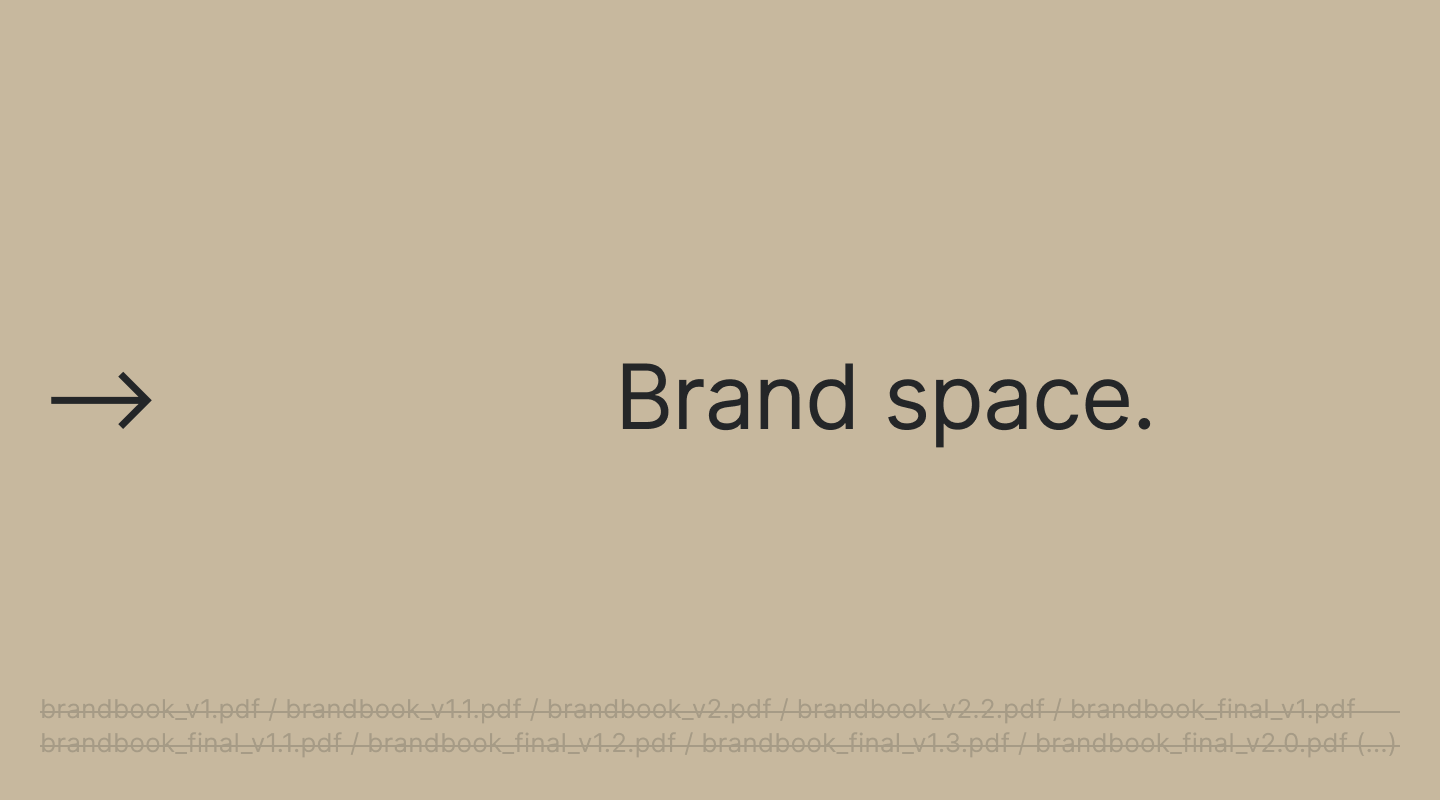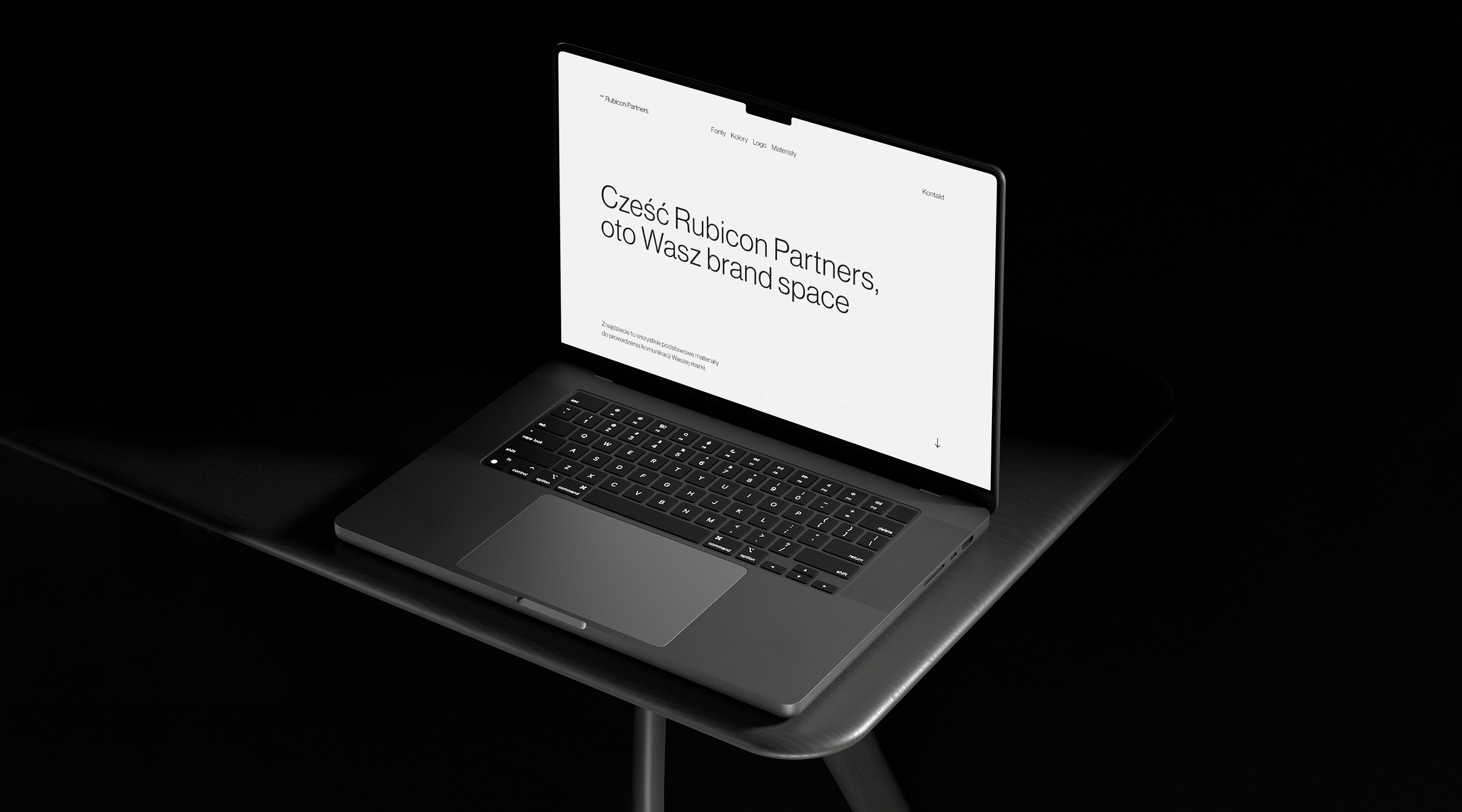We always emphasise that the quality of a corporate identity is largely dependent on the quality of its implementation.

Even the best-designed branding – if not applied correctly and consistently – remains just a design, not an effective tool.
Consistent application of the designed identification should be ensured by the rules set out in the project documentation – usually called the brandbook (or, in the case of rules concerning the logotype, the logobook), and in Polish – the visual identification book or SIW book (System Identyfikacji Wizualnej).
However, this documentation raises several issues:
- Brandbook is a closed PDF file – it is a reliable source of knowledge only until it is updated if necessary. If it is not manually updated – it can be misleading.
- Versioning the brandbook can be problematic – without a thorough knowledge of its update history, we are not always able to recognise whether we are working on the current – latest – version.
- Not everyone in the organisation has access to the documentation, and often they do not even know where to find it or are even unaware of its existence.
Brand Space
A solution for creating and maintaining clear communication regarding a brand’s visual identity is the so-called ‘Brand Space’ – a microsite containing all key information about the brand. This site allows users easy access to current guidelines, the most up-to-date versions of templates or production materials. It is a kind of virtual drive, where one can find all the knowledge and production support presented in an accessible way.
‘Brand Space’ can be accessed both internally and externally to the organisation.
Examples of internal applications of this tool
- HR department: team strengthening / employer branding / onboarding – provides new employees with easy access to branding materials from their first day at the company.
- Marketing department: enables the creation of consistent marketing materials.
- Sales department: provides tools to effectively use branding and work on functional files e.g. from MS Office.
Examples of external use
- Knowledge Base: access to branding for agencies, designers, freelancers and suppliers.
- Co-Branding: opportunity to use brand visuals in partnership.
- Database of materials and templates for partners.
‘Brand Space’ is a tool that is particularly important for brands with a global reach – it is the most effective way to manage when there is a need to maintain consistency across multiple subsidiaries of a company. However, it is not a solution reserved exclusively for corporations. A single, always up-to-date resource maintains a consistent image and minimises wasted time on inefficient email exchanges or searching through PDF versions of the brandbook.
What can be found in Brand Space?
The answer is simple – everything a brand uses to communicate, organised and described in a way that is accessible to all interested parties. The basic scope is:
- Principles: clear branding rules, including logos, typography and colours, presented in the most accessible way possible.
- Assets: ready-to-download visuals, e.g. logotype exports.
- Templates to help create consistent materials.
- Key brand messages, presenting the culture of the organisation, including corporate language and brand history.
‘Brand Space’ is now part of our visual identity design offering. Depending on the budget, this can be a simple website with bespoke functionality, updated by the studio (without access to the CMS), or an editable portal, already developed internally – within the organisation itself.




